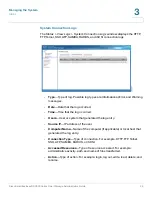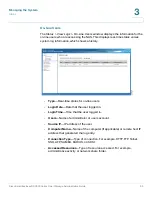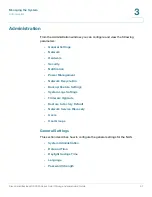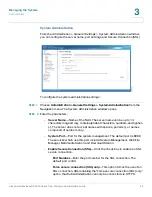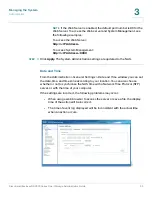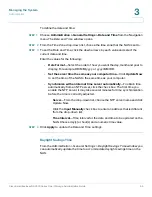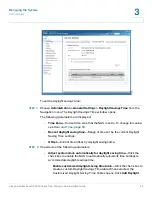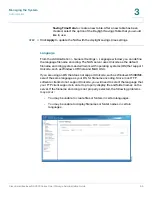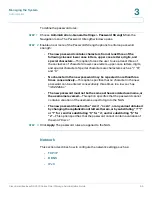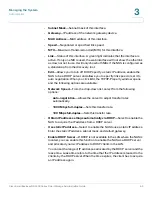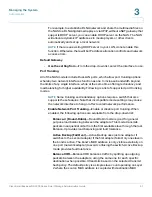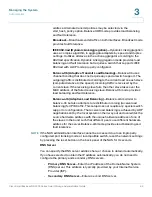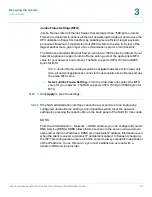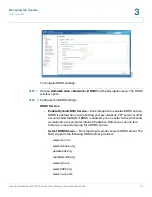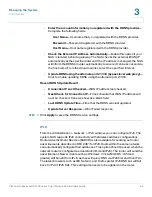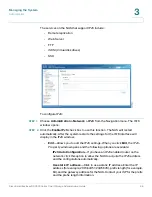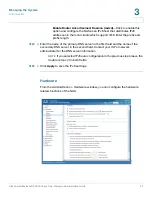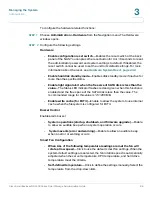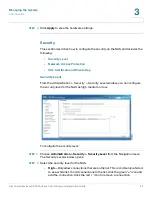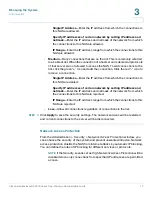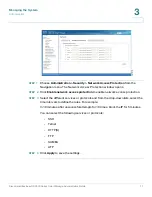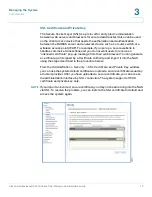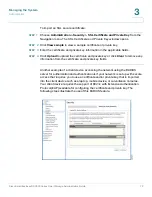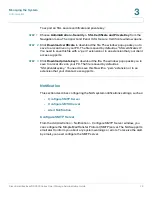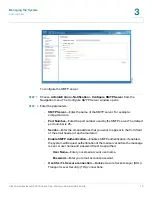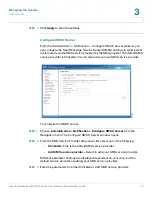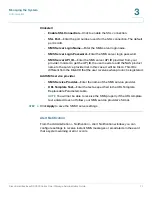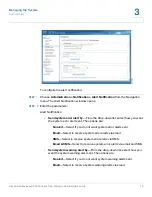
Managing the System
Administration
Cisco Small Business NSS300 Series Smart Storage Administration Guide
63
3
Jumbo Frame Settings (MTU)
Jumbo Frames refer to Ethernet frames that are larger than 1500 bytes. Jumbo
Frames are designed to enhance Ethernet networking throughput and reduce the
CPU utilization of large file transfers by enabling more efficient, larger payloads
per packet. Maximum Transmission Unit (MTU) refers to the size (in bytes) of the
largest packet that a given layer of a communications protocol can transmit.
The NAS uses standard Ethernet frames, which are 1500 bytes by default. If your
network appliances support Jumbo Frame setting, select the appropriate MTU
value for your network environment. The NAS supports 4074, 7418, and 9000
bytes for MTU.
NOTE
Jumbo Frame setting is valid in a Gigabit network environment only.
Also, all network appliances connected must enable Jumbo Frame and use
the same MTU value.
•
Select Jumbo Frame Setting
—From the drop-down list, select the MTU
value for your network. The NAS supports 4074, 7418, and 9000 bytes for
MTU.
STEP 3
Click
Apply
to save the settings.
NOTE
If the NAS administration interface cannot be accessed due to an improperly
configured Jumbo Frame setting or incompatible switch, reset the network
settings by pressing the reset button on the back panel of the NAS for 3 seconds.
DDNS
From the
Administration > Network > DDNS
window, you can configure Dynamic
DNS Service (DDNS). DDNS allows Internet access to the server using a domain
name rather than an IP address. DDNS also maintains IP address information even
when the client received a dynamic IP assignment subject to frequent change by
the ISP. This configuration ensures that the server is always available independent
of the IP address. To use this service you must establish an account with a
dynamic DNS service provider.

